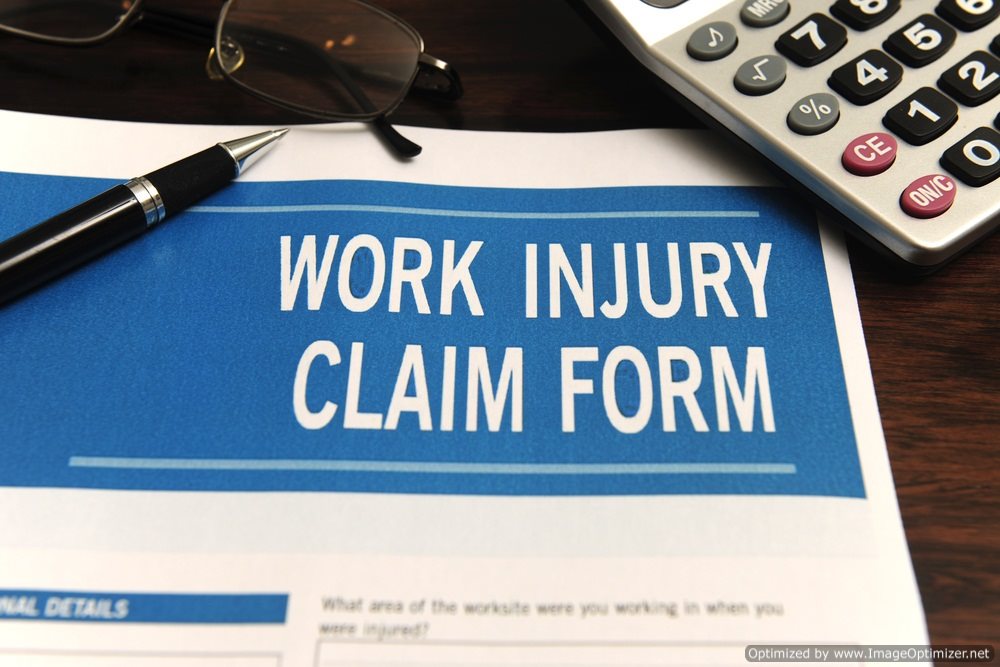
Handling an Injury in the Workplace: A Comprehensive Guide
Injuries can occur at any workplace, regardless of the type of industry. While some work environments are more prone to accidents than others, it’s crucial that every employer prioritizes safety to minimize the risks of accidents or injuries.
Several federal and state laws require every company to implement safety protocols and provide a safe work environment for all employees. Nonetheless, when an accident occurs, the first priority is to ensure that the victim receives immediate medical attention. In this article, we will discuss how to handle an injury in the workplace effectively.
Prevention is Better than Cure: Create a Safe Workplace
Before we discuss how to handle an injury in the workplace, it’s essential to understand the importance of prevention. The first step in preventing workplace injuries is to create a safe work environment. Every employer has a legal obligation to provide safe working conditions for their employees. To achieve this, employers need to develop and implement safety programs that are in line with federal and state safety regulations.
Safety programs should take into account the risk factors that are specific to an industry. For instance, a construction site requires additional safety precautions compared to an office setting. Some of the basic safety protocols that all organizations should have in place include:
Personal Protective Equipment (PPE)
Every organization needs to ensure that their employees have access to Personal Protective Equipment (PPE) as per the occupation and industry. PPE may include coveralls, helmets, goggles, gloves, safety shoes, and earplugs. The type of PPE needed depends on the nature of the task, and employers should communicate this information to employees.
Hazards Communication Program
All employees need to be informed about the hazardous chemicals they may come into contact with in the workplace. To achieve this, employers need to develop a comprehensive Hazard Communication Program, which ensures that employees have access to Material Safety Data Sheets (MSDS) for all hazardous chemicals used in the workplace. Employers should also train employees on the appropriate handling of hazardous materials.
Emergency Response Plan
Every organization needs an emergency response plan outlining the procedures to be followed if an emergency occurs. This plan should include evacuation procedures, communication protocols, and emergency contacts.
Regular Safety Training and Inspections
Employers should schedule regular safety training and inspections to ensure that employees are aware of safety protocols and hazards. They can also implement safety observation programs where employees are encouraged to report any potentially hazardous situations.
Make sure that employees participate in the safety programs. Encourage a culture of safety as an integral part of the company’s operations.
First Steps after an Injury: Call 911 and Provide First Aid
When an employee sustains an injury in the workplace, the first priority is to ensure that they receive immediate medical attention. You must have a well-prepared Emergency Response Plan that all employees are familiar with. The plan should outline the steps to be followed in the event of an injury or other emergencies. The following are the initial steps to take after an employee gets injured:
Call 911
If the injury is severe, call 911 immediately. Provide the operator with the victim’s location, the nature and extent of the injury, and other essential details required.
Provide First Aid
While waiting for medical assistance to arrive, provide first aid. A first aid kit is a basic requirement in every workplace. If you don’t have a first aid kit, get one immediately. The contents of a first aid kit may include antiseptics, bandages, scissors, gloves, and gauze pads, among others. You should have someone designated as the responsible person for maintaining the first aid kit. Provide basic first aid treatments such as stopping the bleeding, bandaging the wound, or keeping the victim’s airway open.
Report the Incident to the Appropriate Authorities
You need to report the incident to the relevant authorities. Depending on the incident, you may need to contact OSHA, the State Safety Office, or the Worker’s Compensation Board. This step is vital as it not only ensures that the incident is recorded, but it also helps identify potential causes, enabling the company to take appropriate corrective action.
Investigate the Incident: Identifying the Root Cause
It’s essential to investigate every workplace incident to identify the root cause and prevent a similar incident from occurring in the future. The investigation should be conducted as soon as possible and should involve a team of individuals trained in safety and incident investigation. These individuals should be focused on finding out what caused the accident to occur and what measures can be put in place to prevent it from happening again.
Some of the steps involved in an incident investigation include:
Gathering Information
Collect as much information as possible about the incident, including photographs or videos of the scene, statements from witnesses, and any relevant documents.
Conducting Interviews
Interview the victim and anyone who witnessed the incident. Ask detailed questions about what they experienced and what they believe caused the accident.
Analyzing Information
Analyze all of the information gathered to identify the root cause of the accident. While doing so, keep in mind the question, What could have been done differently to prevent this accident from occurring?
Determining Preventative Measures
Once the root cause has been identified, determine the necessary measures to prevent a similar accident from occurring in the future. Examples of preventative measures include changes to the work environment, improved safety training, upgrading equipment, or reviewing procedures.
Document the Investigation
Document the investigation and findings. The documentation will be necessary to provide feedback to employees, update safety protocols, and also to comply with government regulations.
Communicate the Incident and Implement Recommendations
After completing the incident investigation, it’s essential to relay the findings to employees. Communication should include the details of the incident, the root cause, and preventive measures that will be put in place. Communication should also include recommendations for preventing future accidents.
All recommendations should be implemented without delay. Employees should be trained on the new protocols or any other initiatives put in place. Regular reviews should be conducted to ensure that the preventative measures are effective and that the safety of the employees is a top priority.
Follow Up and Monitor the Employee’s Recovery
Following an injury in the workplace, it’s essential to follow up with the employee’s recovery. This follow-up may involve communicating with the injured employee, regular check-ins, and supporting their recovery process.
Communication with the employee
The injured employee should stay up-to-date on the progress of the case regularly. If the employee is out of work, check with them when they can return to work. They should be aware of the company’s policies on sick leave, disability leave, and any other relevant employee benefits.
Regular check-in
If the employee is still under medical care, check-in often to wish them a speedy recovery and encourage them during their healing. Make it clear that the company supports them and is committed to their well-being, even after the incident.
Support the recovery process
Support the employee’s recovery as needed. The company may provide resources or counsel the employee on available medical or counseling services.
Conclusion
In conclusion, accidents can occur in any workplace, but the priority is ensuring the immediate safety of the victim. Once the incident has been reported, a thorough investigation should be conducted to identify the root cause and implement measures to prevent future incidents. This process is essential to ensuring the continual safety of employees. Remember, prevention is better than cure, always be pro-active about workplace safety and maintain regular safety training and reviews.
Every organization needs to ensure that their employees have access to Personal Protective Equipment (PPE) as per the occupation and industry. PPE may include coveralls, helmets, goggles, gloves, safety shoes, and earplugs. The type of PPE needed depends on the nature of the task, and employers should communicate this information to employees.
All employees need to be informed about the hazardous chemicals they may come into contact with in the workplace. To achieve this, employers need to develop a comprehensive Hazard Communication Program, which ensures that employees have access to Material Safety Data Sheets (MSDS) for all hazardous chemicals used in the workplace. Employers should also train employees on the appropriate handling of hazardous materials.
Every organization needs an emergency response plan outlining the procedures to be followed if an emergency occurs. This plan should include evacuation procedures, communication protocols, and emergency contacts.
Employers should schedule regular safety training and inspections to ensure that employees are aware of safety protocols and hazards. They can also implement safety observation programs where employees are encouraged to report any potentially hazardous situations.
If the injury is severe, call 911 immediately. Provide the operator with the victim’s location, the nature and extent of the injury, and other essential details required.
While waiting for medical assistance to arrive, provide first aid. A first aid kit is a basic requirement in every workplace. If you don’t have a first aid kit, get one immediately. The contents of a first aid kit may include antiseptics, bandages, scissors, gloves, and gauze pads, among others. You should have someone designated as the responsible person for maintaining the first aid kit. Provide basic first aid treatments such as stopping the bleeding, bandaging the wound, or keeping the victim’s airway open.
You need to report the incident to the relevant authorities. Depending on the incident, you may need to contact OSHA, the State Safety Office, or the Worker’s Compensation Board. This step is vital as it not only ensures that the incident is recorded, but it also helps identify potential causes, enabling the company to take appropriate corrective action.
Collect as much information as possible about the incident, including photographs or videos of the scene, statements from witnesses, and any relevant documents.
Interview the victim and anyone who witnessed the incident. Ask detailed questions about what they experienced and what they believe caused the accident.
Analyze all of the information gathered to identify the root cause of the accident. While doing so, keep in mind the question, What could have been done differently to prevent this accident from occurring?
Once the root cause has been identified, determine the necessary measures to prevent a similar accident from occurring in the future. Examples of preventative measures include changes to the work environment, improved safety training, upgrading equipment, or reviewing procedures.
Document the investigation and findings. The documentation will be necessary to provide feedback to employees, update safety protocols, and also to comply with government regulations.
The injured employee should stay up-to-date on the progress of the case regularly. If the employee is out of work, check with them when they can return to work. They should be aware of the company’s policies on sick leave, disability leave, and any other relevant employee benefits.
If the employee is still under medical care, check-in often to wish them a speedy recovery and encourage them during their healing. Make it clear that the company supports them and is committed to their well-being, even after the incident.
Support the employee’s recovery as needed. The company may provide resources or counsel the employee on available medical or counseling services.
Workplace safety is an essential component of a successful business, not only because of the need to provide for smoothly running operations and high morale among employees, but also the high legal costs that can be associated even with a simple occurrence of the “slip and fall” kind of accident. An injury in the workplace can be the subject for a personal injury lawsuit, particularly if the management fails to care for the employee’s well-being and respond to his or her concerns in due time.
In any event, the compromising of workplace safety must be dealt with according to regular procedures and with respect for the needs of the injured employee. From slip and fall mishaps to large-scale industrial accidents, workplace safety should be strictly provided for by a responsible employer, failing which the onerous effects of personal injury law may be imposed on the business.
Workplace accidents are especially common due to the simple probability that a place in which people spend so much of their lives will also be the place where they might slip and fall or experience any other kind of accident. The likelihood of a high frequency in workplace accidents is increased by the common occurrence of people being asked to perform actions which they would not have otherwise assented to out of safety concerns.
A business can provide for the safety of its workplace in this regard by limiting the danger posed by its regular operations as much as possible and ensuring that their workers are well trained. That being said, accidents can never be completely guarded against, and very common ways for injuries to be suffered, such as a slip and fall type of accident, should be provided for as a contingency by any kind of business, ranging from factories to restaurants.
Employers are required to inform the government of any compromising of safety in the workplace. They will be expected to submit a form of documentation to this effect, recording testimony from both themselves and the employee in question, and allowing them to demonstrate due diligence in providing for the criminal and civil legal measures which assure employees of their right to safety in the environment of their workplace.
In many industries, a regular form of documentation is provided through the government in which both the occurrence and the causes of an accident can be recorded, and if necessary later furnish evidence for a tort for personal injury being brought in a civil case against the responsible party.
Employers must also participate in recording the steps of a workplace accident, and should make their report according to the model of one of the forms commonly used for such events, in order to provide for the comprehensibility of the document. A workplace accident form will provide a space for the account of the employee as to how he or she was injured on the job. Another space is provided for the employer to give comments and any additional details on how workplace safety had been violated.














